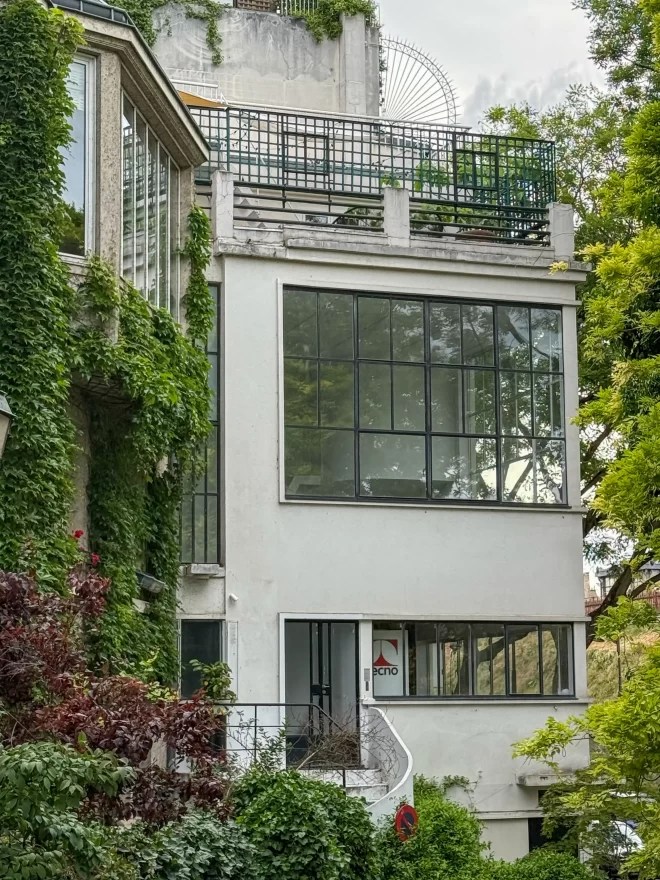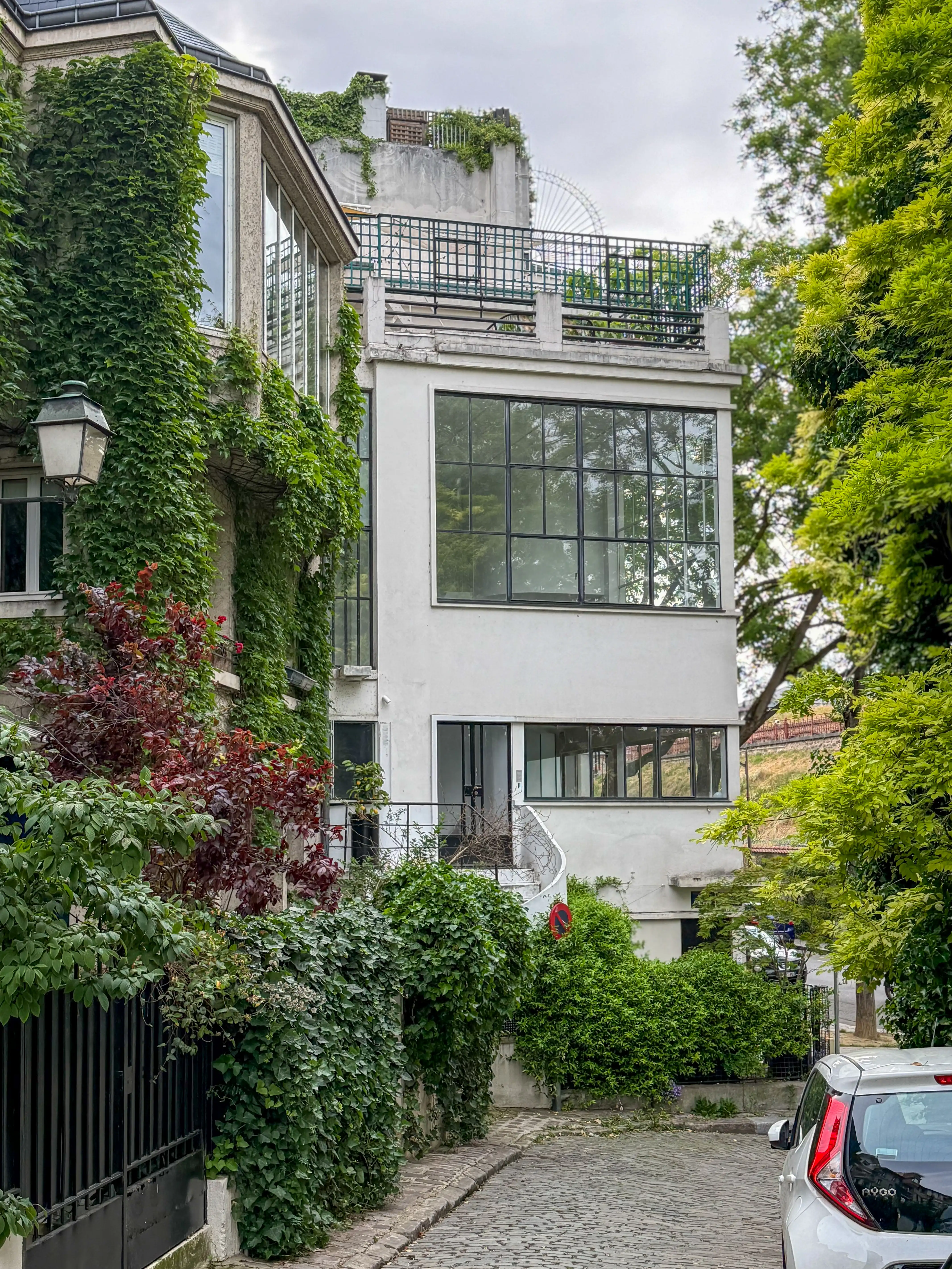
Atelier Ozenfant, 1922–1924. Architects: Le Corbusier, Pierre Jeanneret. Photo: Daniela Christmann
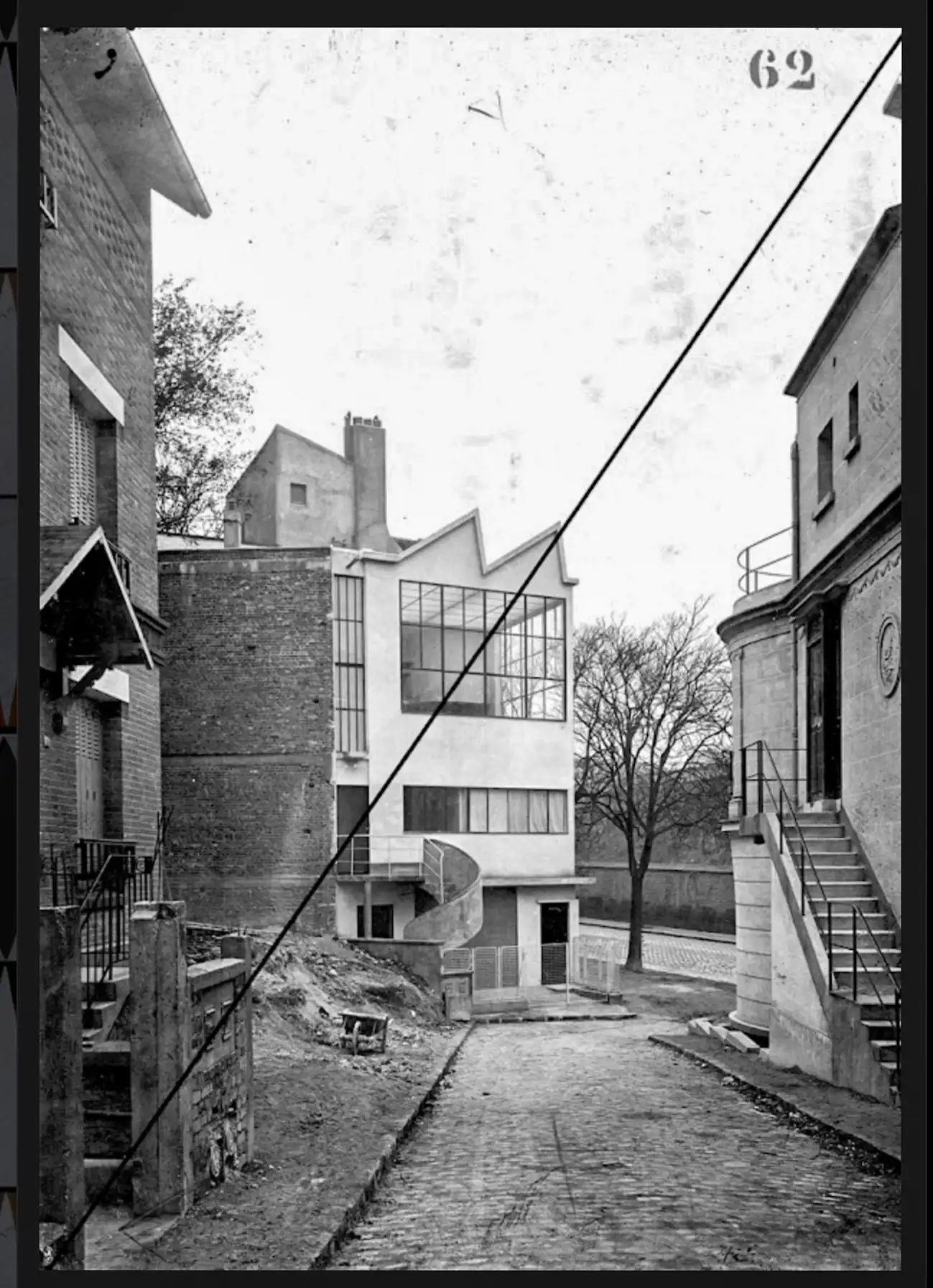
Atelier Ozenfant, 1922–1924. Architects: Le Corbusier, Pierre Jeanneret
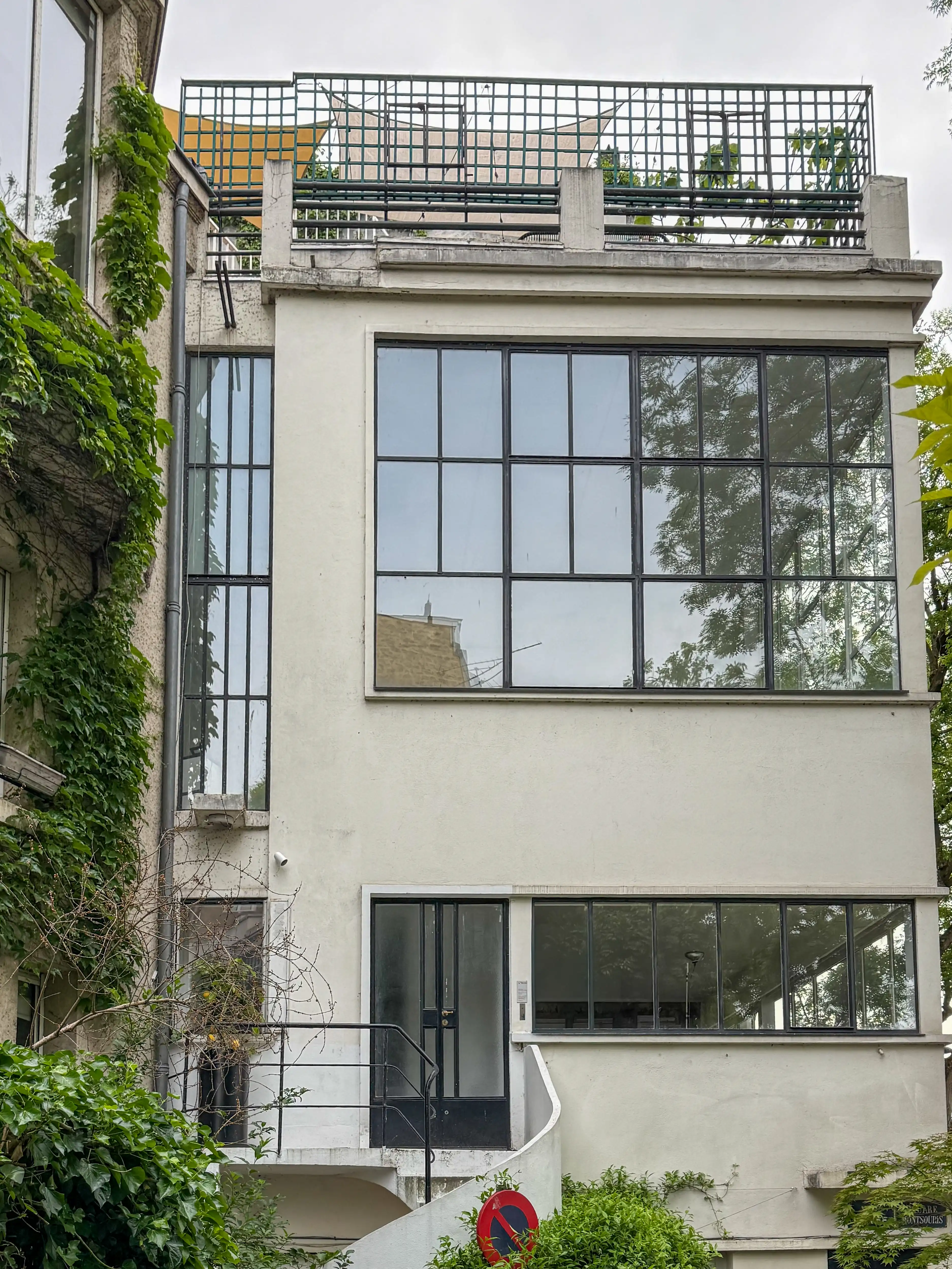
Atelier Ozenfant, 1922–1924. Architects: Le Corbusier, Pierre Jeanneret. Photo: Daniela Christmann
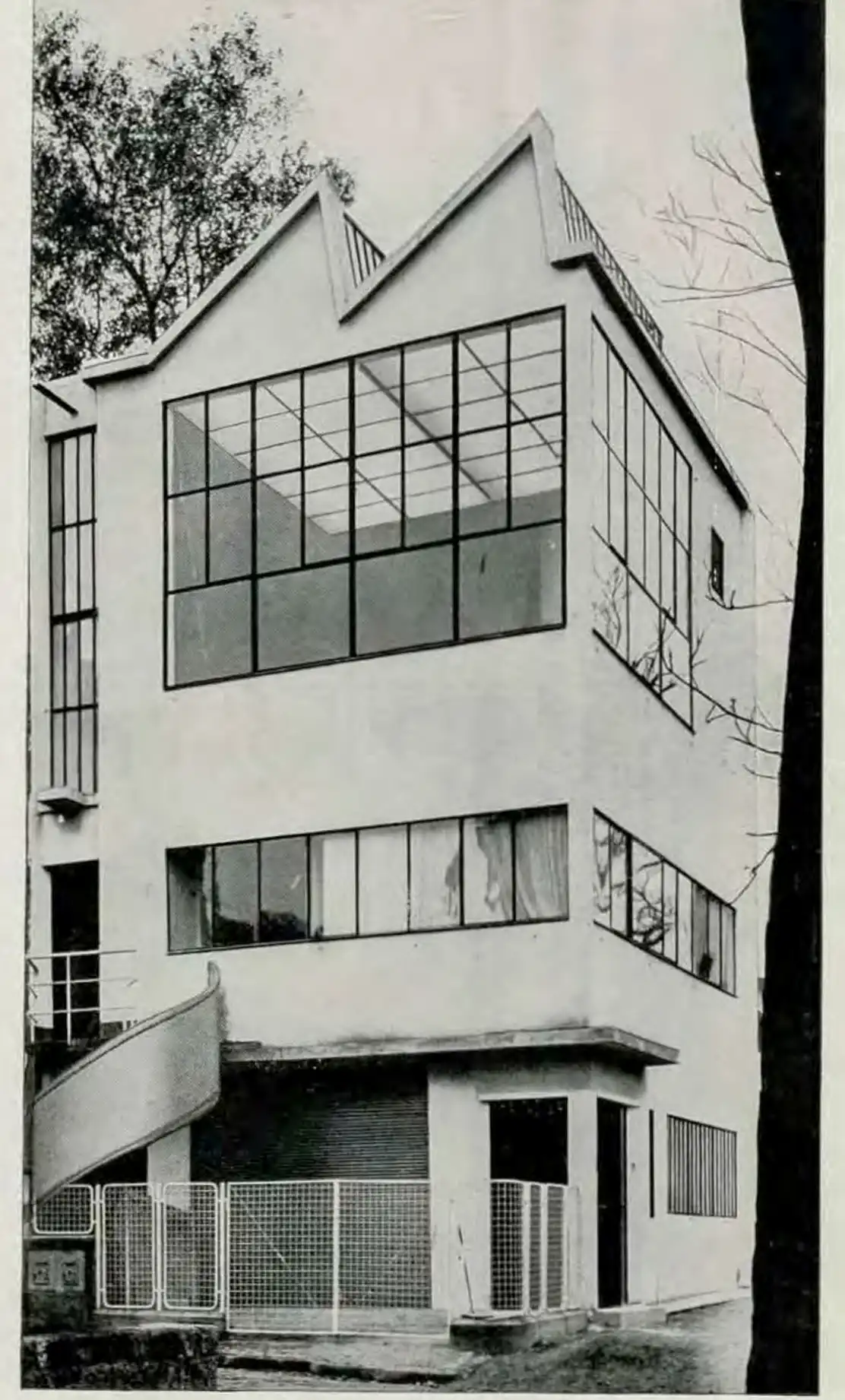
Atelier Ozenfant, 1922–1924. Architects: Le Corbusier, Pierre Jeanneret
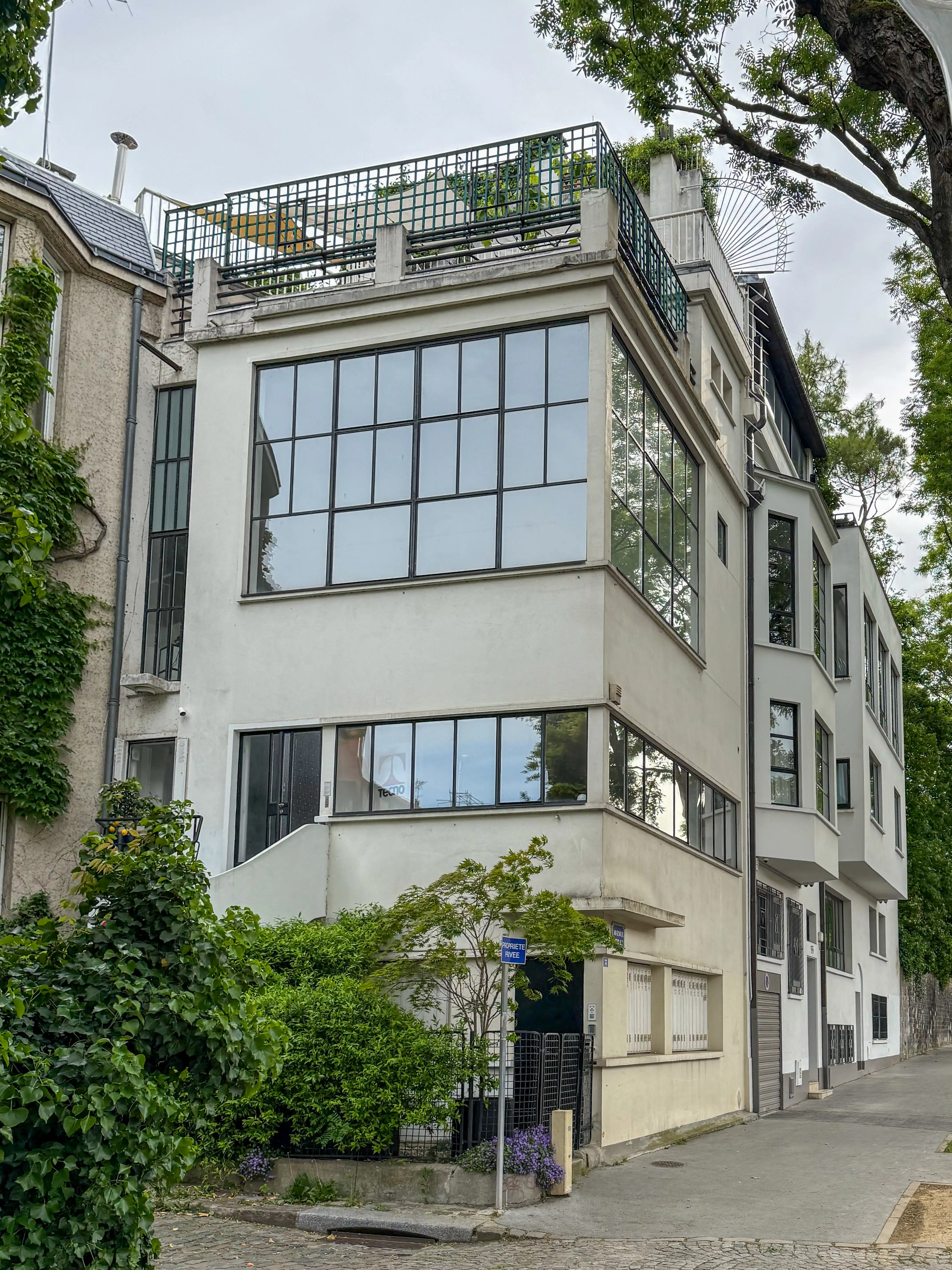
Atelier Ozenfant, 1922–1924. Architects: Le Corbusier, Pierre Jeanneret. Photo: Daniela Christmann

Atelier Ozenfant, 1922–1924. Architects: Le Corbusier, Pierre Jeanneret. Photo: Daniela Christmann

Atelier Ozenfant, 1922–1924. Architects: Le Corbusier, Pierre Jeanneret. Photo: Daniela Christmann
1922 – 1924
Architects: Le Corbusier, Pierre Jeanneret
53 avenue Reille, Paris, France
The studio house of painter and critic Amédée Ozenfant (1886–1966) was one of the first in Paris built in the Purist style. Ozenfant mentored Le Corbusier in the development of Purism.
Purism
Purism is a 20th-century style of modern art and architecture. Founded by Le Corbusier and Amédée Ozenfant with the manifesto ‘Après le cubisme’ (After Cubism), it is characterized by clear geometric forms, a limited color palette, and a selection of a few everyday objects as pictorial subjects.
The polemic ‘Après le Cubisme‘ (After Cubism), published in 1918 and also considered the manifesto of Purism, marks its beginning. In it, Le Corbusier and Ozenfant criticized the then current trends of Synthetic Cubism and Orphism as overly decorative and ornamental.
L’Esprit Nouveau
Following their initial meeting, which was arranged by Auguste Perret, Ozenfant encouraged Le Corbusier to take up painting more seriously.
The main mouthpiece of Purism was the magazine L’Esprit Nouveau, which was founded in 1919 by Ozenfant, Paul Dermée, and Le Corbusier. Through the magazine, they attempted to spread their idea of the new art movement. In 1921, they published a revised manifesto of Purism under the title Purism.
The Purists showed great interest in machines and their aesthetics. They believed that artists should learn from machines and apply the principle of mechanical repetition to art production. Simple geometric forms were to be used with machine precision and a rational basis.
“The free façade. Standardization of the window element on a human scale. Unity and its combinations. Reinforced concrete frames and double walls with 4-cm-thick cement mortar partitions. The problem must be clearly identified, the typical requirements for a residential building defined, and the problem solved, as is also the case with railway carriages, tools, etc.” (Le Corbusier, Complete Works, Volume 1, 1910–1929).
Modulor
Purists valued the Golden Ratio as the ideal proportion. They rejected purely decorative elements. Le Corbusier patented the Modulor, a system of proportions based on the golden ratio.
The first Purist exhibition, featuring paintings by Ozenfant and Le Corbusier, took place in December 1918 at the Galerie Thomas in Paris. A second exhibition followed in January 1921 at the Galerie Druet.
Pavillon de l’Esprit Nouveau 1925
Le Corbusier’s most famous work of Purism was on display at the 1925 Internationale des Arts Décoratifs exhibition: the Pavillon de l’Esprit Nouveau. The pavilion’s architecture, interior design, paintings, sculptures, furniture, and decorative objects documented Purist aesthetics.
Ozenfant Studio House
The painter Ozenfant’s studio house was one of the first in Paris built in the Purist style.
In 1923, Le Corbusier acquired a plot of land near Parc Montsouris. The narrow, corner lot presented the co-owners with a number of restrictions, including the construction of walls without openings on three sides of the building.
The studio house
The studio house is cuboid in shape, based on a reinforced concrete structure with floor slabs and load-bearing posts. This enabled the creation of large bay windows and ribbon windows. Additionally, light fell through the shed roof, a type of skylight construction only found on industrial sites at the time.
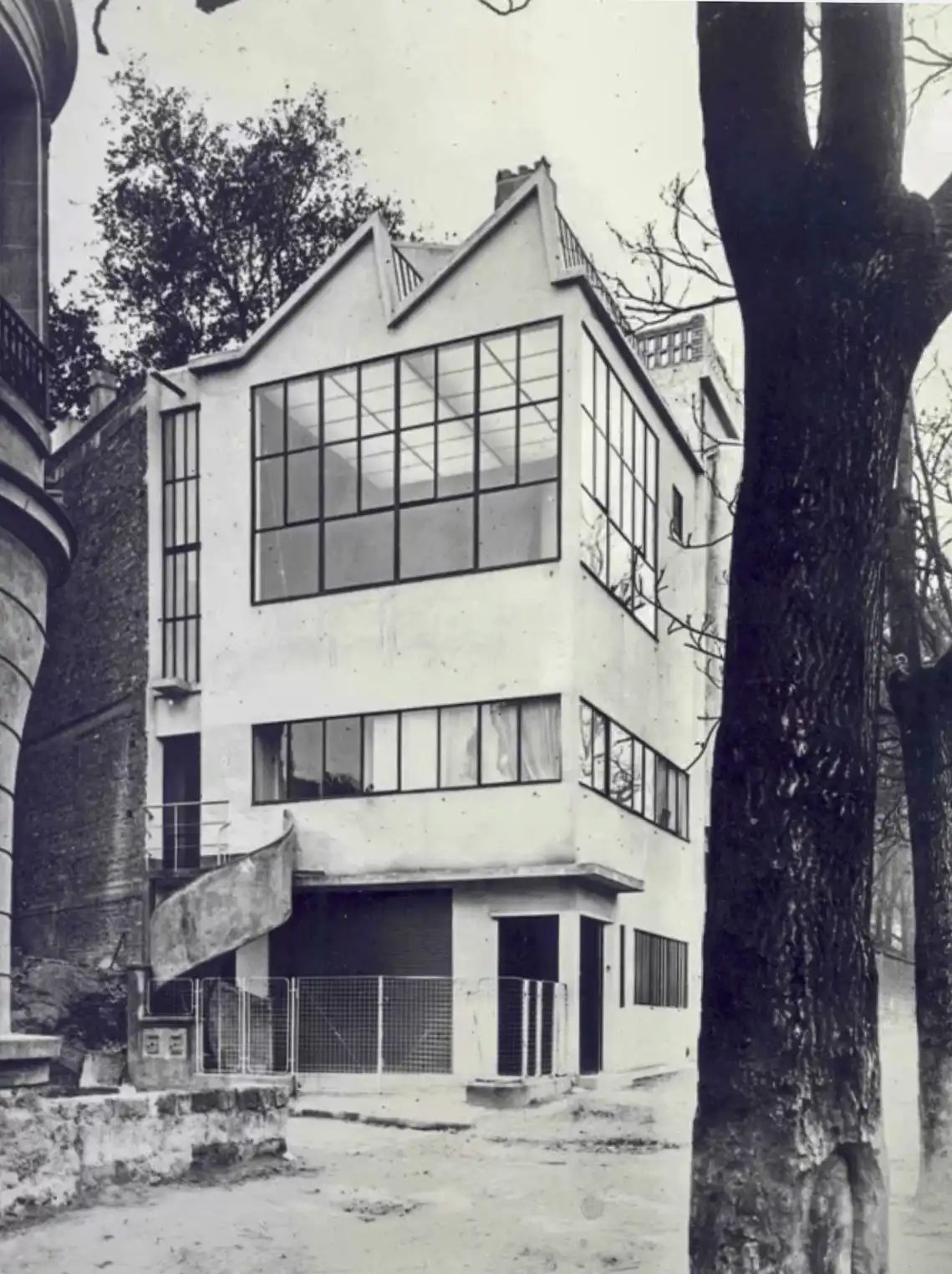
Atelier Ozenfant, 1922–1924. Architects: Le Corbusier, Pierre Jeanneret

Atelier Ozenfant, 1922–1924. Architects: Le Corbusier, Pierre Jeanneret
Interior
An external spiral staircase led to the first-floor apartment, which included a bedroom, bathroom, dining room, exhibition space, and a storage room for artwork. Another spiral staircase led to the second floor, where an artist’s studio occupied the space. The studio was lit by a glass roof and two mezzanine floors, one of which served as a library. The mezzanine floors were accessible via steel staircases. The ground floor contained a garage and a housekeeper’s apartment.
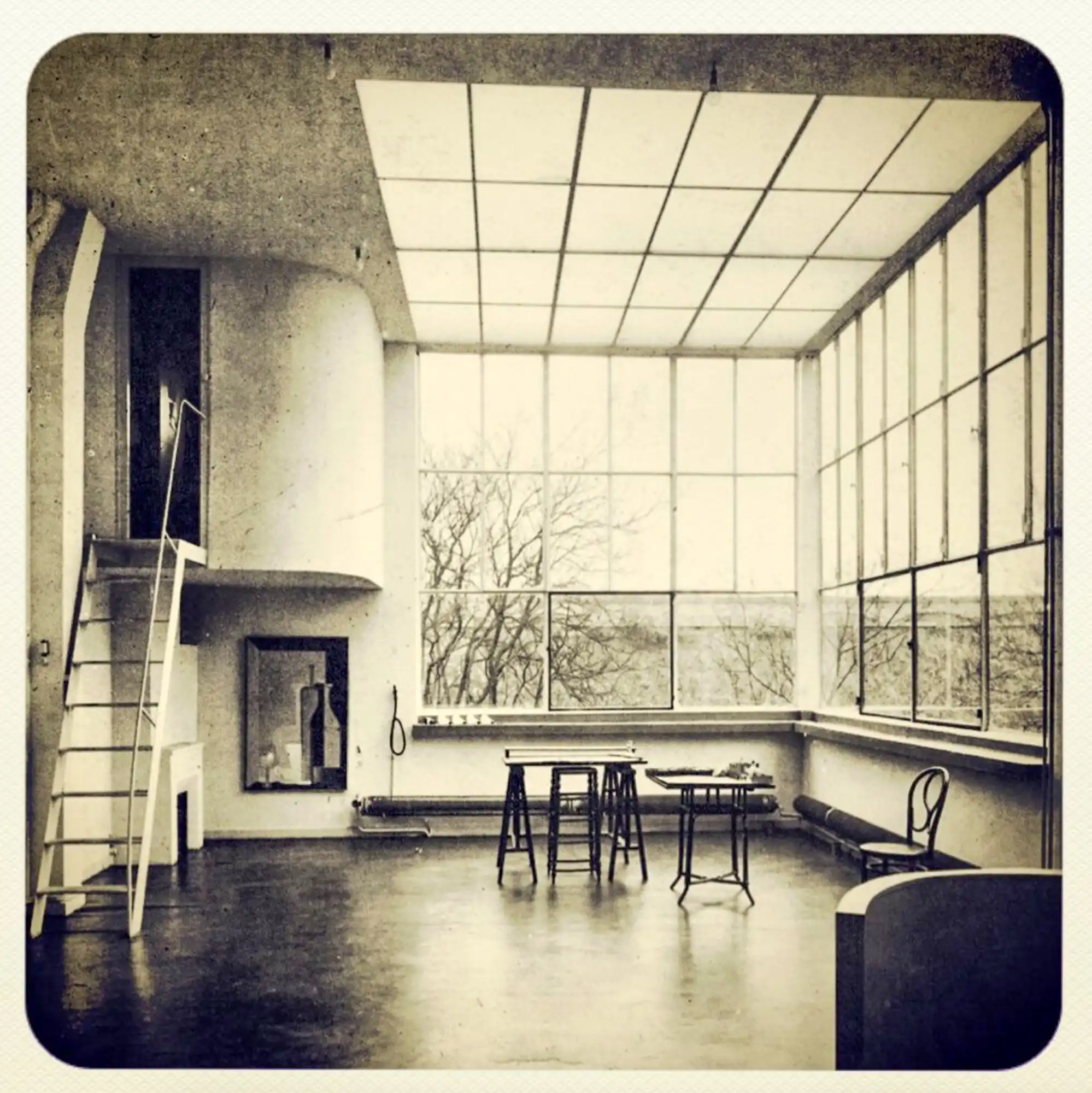
Atelier Ozenfant, 1922–1924. Architects: Le Corbusier, Pierre Jeanneret
Architectural Promenade
The Ozenfant studio is the first example of an architectural promenade in Le Corbusier’s work. The path first leads outside, where a spiral staircase made of reinforced concrete leads upward. Inside, the tour continues with a steel spiral staircase.
Visitors experience a variety of spatial situations that create the illusion of a larger space.
Sale of the Studio House and Subsequent Renovations
Shortly before World War II began, Amédée Ozenfant moved out and sold the house.
Since then, the house has undergone several renovations. In 1946, the original roof with two glazed sawtooth skylights was removed when the villa was raised and a terrace was added. The interior was altered by adding partition walls, redesigning the ground floor window arrangement, and removing the garage door.
On January 15, 1975, the façades and roofs were added to the list of protected buildings.

